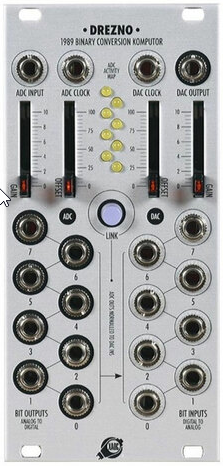Just a second… why the title of the previous post? I was going to say something about the musical term ostinato, which of course, means obstinate.
“A motif or phrase that persistently repeats in the same musical voice, frequently in the same pitch.” Examples given include Donna Summer/Giorgio Moroder’s “I Feel Love”
This is something I latched onto at a young age, before electronic music (and thus simple sequenced loops) was common. I used to noodle a repeating passage on the piano, sometimes playing with nuances of timing, sometimes just repeating it obstinately. Though I hadn’t heard of Brian Eno, I was exploring the idea that repetition is a form of change. It infuriated my grandma because I “wasn’t playing proper music” — which meant a tune someone else wrote and was printed as sheet music. Improvisation barely counted as music to her; my proto-exploration of drones and reverb with the sustain pedal most certainly did not. We were both obstinate toward each other quite a lot.
Of course ostinato in Western music dates back at least to the 13th century and has (appropriately) never stopped. It’s also prominent in sub-Saharan African and Indian classical music and probably appears in most cultures’ music, honestly.
Anyway, I’ve been using short repeating sequences as part of music for a while now, and it occurred to me it’s somewhat related to drone. I only recently recalled the term — being more used to thinking of them as “loops” or even (incorrectly) “arps” (for arpeggio, which should only refer to spreading out the notes of a chord). I had a good chuckle about the meaning of the name.
So: Drezno! A few days ago I described what it is, and what I thought I could use it for. Now I have some practical experience, and opinions.

As a waveshaper, it is fantastic. By simply blocking a bit, you add kinks into the waveform, and thus harmonic content, which varies with the dynamics of the input. Much like a wavefolder! You can also rearrange bit order or plug other sources in, for instance, to mix two oscillators in unusual ways.
As a digital noisifier it’s also pretty amazing. Simply blocking lower-ordered bits reduces resolution. Since lower-ordered bits tend to change faster (and thus have more high frequency content) and be more subject to analog noise, replacing them or boosting their positions up the chain can have some nice effects, and using them to clock the DAC is also very nice. I’m getting sounds reminiscent of the YM2612 and also some more unique artifacts.
These things hold true for LFOs and envelopes too, turning smooth ramps and curves into steppy fractal patterns, and shifting the levels of steppy CV sequences.
Patching a couple of low-order bit outputs into the high-order inputs and clocking the DAC externally gives those “Atari noises” I was looking for, and with feedback from the DAC to ADC and slower clocks, shift register patterns. The patterns tend to be more volatile than typical LFSRs like Zorlon Cannon — probably because analog noise is a factor, and because exactly matching the scale and offset of both ADC and DAC is difficult. But there are some interesting results. I’m currently deciding whether or not to keep Zorlon Cannon — my current modular plan still has room for it, but I should be able to cover its abilities well enough between Drezno and Teletype and plugins.
Experiments have shown me that clock dividers, logic etc. aren’t going to be all that fun when processing audio through Drezno, and Teletype and other stuff can handle it should I want to use it at lower rates. Maybe a switch/rotator of some kind eventually, such as the upcoming Noise Engineering Vice Virga or one of the 4-way options, but I’m not necessarily going to plan on it now. I also won’t bother with the Lipsk expander. Jena is a yes for sure though — more waveshaping and patterns, Walsh functions and phase modulation sound like great options to add.
So, right now I am figuring out how I might rearrange the case — the gaps are looking a bit weird with E520 and Zorlon out. The goal:
- The mult+passthru needs to be on the left, with a 1HP gap to pass cables through. The ES-3 needs to be very nearby.
- Teletype needs to be on the right, next to TXb or a 1HP gap to allow the i2c cable to pass through. (This could balance the other 1HP gap.)
- Drezno/Jena need to be adjacent.
- Planar should be on the front/bottom row.
- LCDs should be at a good reading angle.
- All the free space should be contiguous, like defragging a hard drive, to prevent having to rearrange to fit other modules later.
- It’s helpful to have certain modules that can act as mults (Shades, the Ladik switch, O’Tool+, maybe an actual mult) near the horizontal center.
- Preferably, black panels aren’t adjacent — I find they tend to get a bit lost that way.
- Some modules “like” to be near each other — Shades and the Ladik switch, Clep Diaz near an attenuator, Drezno near O’Tool+, etc.
That’s a lot of priorities to shuffle, and there will be some failure of the less important goals. Oh well!
